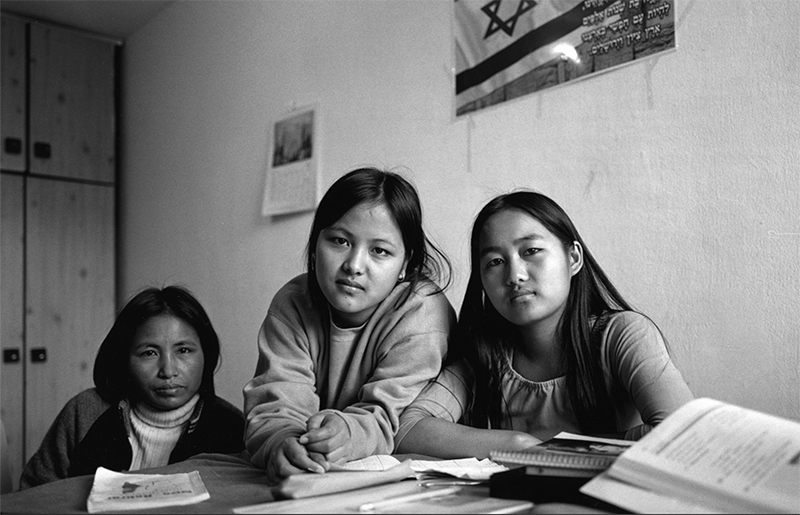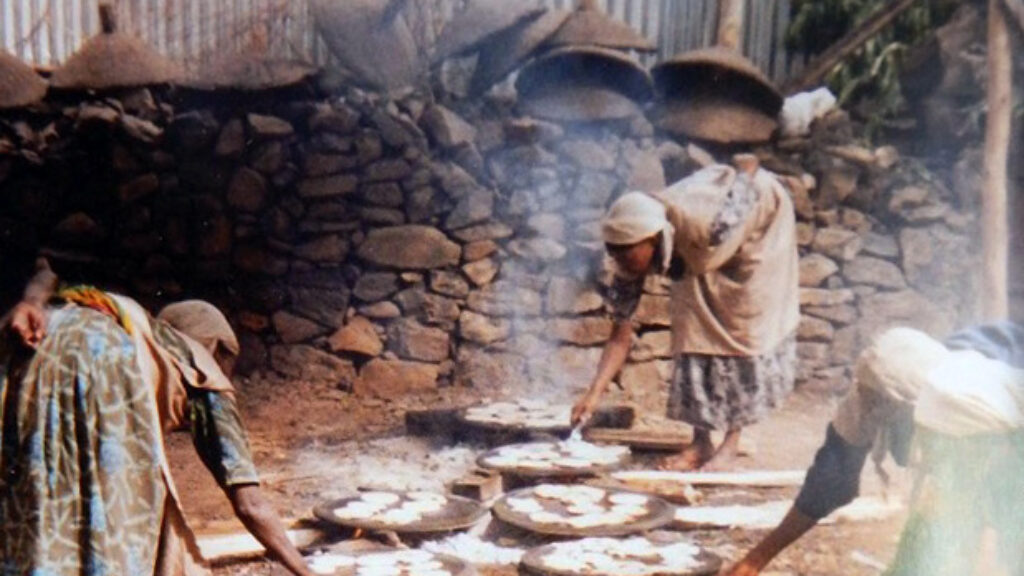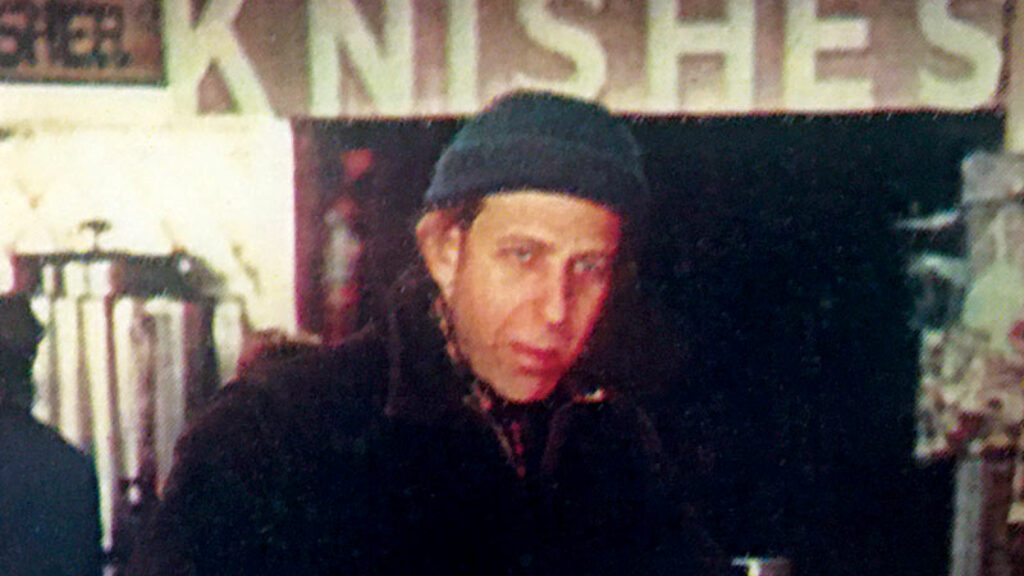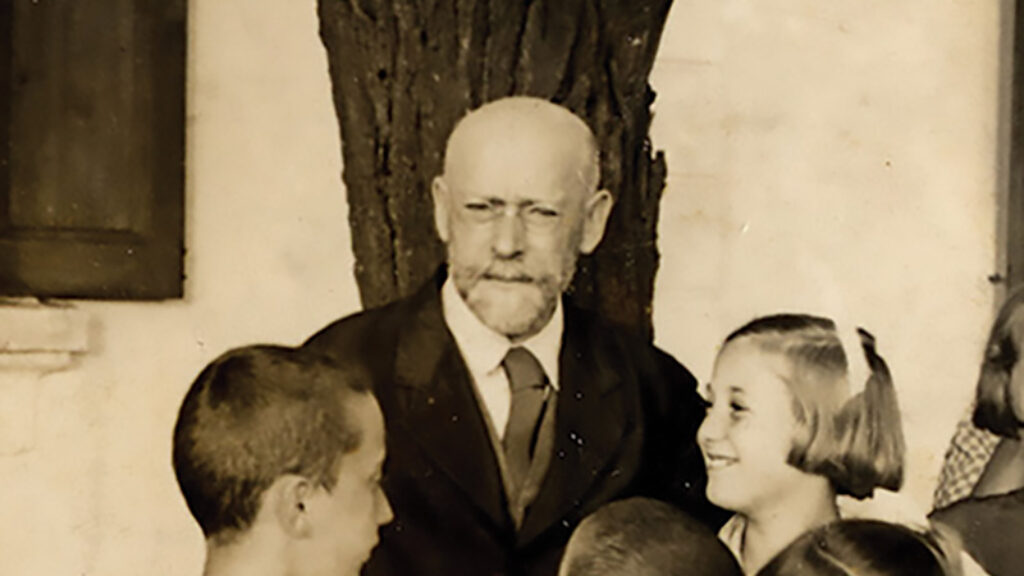The Blessings of Manasia
“That evening, we soaked rice in water and pounded it into a fine flour. We added water to the flour to make a dough, wrapped the dough in banana leaves, and boiled it in a pot. This boiled bread was called changlhah. If such bread was made at other times of the year, we used yeast, but on Changlhah Suh Ni no yeast was allowed.”
If you heard this from someone reared far from Jews, you might think it a cultural coincidence worthy of a smile. But what if a landsman of this fellow with the bread different from all other breads told you that a hymn from his childhood went like this: “The mighty red sea was dried up. He led us with cloud in the day, at night by fire. The deep sea swallowed our enemies like dead beasts.” And now imagine the same people claimed as their great ancestor a certain Manasia, father of Gelet, father of Ulam? Well once you flipped to 1 Chronicles 7:14-18 and recall that Joseph’s son Menashe had a grandson Gil’ad and a great-grandson Ulam, should you have the right to merely smile?
Hillel Halkin, the distinguished essayist and author of the language column Philologos, thinks not. The Passover-like festival, the Red Sea hymn, and the genealogy of Manasia are just the most salient indications that the Kuki-Mizo, a small Tibetan-Burmese ethnic group from northeast India, descend, at least in part, from the Israelite tribe of Menashe. “I am talking about singularities, parallels that are both too detailed and too unique to be explicable as coincidence,” Halkin writes of the evidence in the afterword to Lives of the Children of Manasia. The book is the work of Halkin and Isaac Thangjom—a member of the B’nei Menashe, as they’re known in Israel—who conducted, translated, and edited twelve interviews with senior members of this old-new Jewish community about their lives in India and Israel.
The Lost Tribes of Israel rank with the Holy Grail and the Fountain of Youth as an inspiration to failed quests and feverish quackery. A chapter of Across the Sabbath River, Halkin’s 2002 memoir of his adventure from doubting to cautiously accepting the Kuki-Mizo’s authenticity, recounts the career of this alleged myth. The messianic promise of ingathering Jewish exiles may have helped persuade Oliver Cromwell to readmit Jews to England in 1655. And the march of a nonexistent Lost Tribe army followed Shabbtai Zevi’s self-anointment as messiah, destabilizing the lives of many anxious Jews before Zevi’s conversion to Islam in 1666.

Halkin thought at first that reports of the Kuki-Mizo descent from ancient Israelites were greatly exaggerated; a commonplace ritual here, a poorly remembered myth there, some amulets and songs and other sundries produced by the Kuki-Mizo in the passionate belief that their forefather Manasia was Jacob’s son, and their ancestral religion was a vestige of ancient Judaism. Halkin had a simpler explanation for all these alleged signals. Many Kuki-Mizo converted—via British missionizing—to Christianity in the first part of the twentieth century. Dissatisfied with their new religion and attached to their old one, the Kuki-Mizo retrojected the latter into the prehistory of the former. The phonetic similarity between “Manasia” and “Menashe” made it easy to claim the biblical character as a forebear.
Then Halkin met Dr. Khuplam Milui Lenthang. The physician and self-taught ethnographer had a collection of stories and priestly chants from the old Kuki-Mizo religion with astonishing parallels to the Biblical Creation narratives, to the Joseph and Exodus stories, and of course to the genealogy of Menashe. Halkin thinks that if Christianity were the cause of the resemblances, we’d expect New Testament influence in Kuki-Mizo lore. We’d also expect references or allusions of the Old Testament patriarchs (to say nothing of later biblical characters), and not just Joseph and his relatively insignificant half-brother Menashe. But the stories the Kuki-Mizo have preserved are consistent with an Israelite spinoff from 2,800 years ago. A later Christian—or Islamic—origin makes little sense.
Halkin the philologist also detects echoes of ancient Hebrew in the Kuki-Mizo canon. The exclamatory “Aborizah!” Halkin traces to “HaBoreh Ya”: “the Creator—God!” The proximity in biblical Hebrew of the words for earth and red to the word for man is reproduced in a Kuki-Mizo creation narrative. “It’s as if an ancient biblical pun preserved in no translation of the Bible has survived,” Halkin wrote (though some years after Across the Sabbath River came out, Robert Alter published a translation of Hebrew scripture that has God making a “human” out of “humus from the soil”).
Halkin’s central linguistic insight pointed him toward his working theory of the Kuki-Mizo descent from ancient Israel. A Kuki-Mizo story tells of a wildcat—the name of which is pronounced “sangametsa”—chasing Kuki-Mizo ancestors out of a “fruitful oiled land” in the late eighth century BCE. Halkin proposes that the Kuki-Mizo wildcat is a mythic zoologizing of Shalmaneser, the Assyrian king who besieged Israelite Samaria in—you guessed it—the late eighth century BCE. (Halkin’s phonetic genealogy of the wildcat-king is worth the price of the book.)
It was Assyrian policy to disperse conquered populations. And indeed the Kuki-Mizo text mentions just such a dispersal of “the children of Manmasi,” another name for Manasia. Halkin now believes that a small group of Manassites was banished east of Samaria across the Assyrian empire and settled near and mixed with peoples in or near the northeast Indian states of Manipur and Mizoram, where the B’nei Menashewho came to Israel in the past three decades were raised.
The interviews in Lives of the Children of Manasia were conducted in the late 2010s in Israel, where about half of the ten thousand B’nei Menashe now live (the rest are still in India). The subjects are senior members of the community, aged roughly fifty-five to ninety, who spoke to Thangjom in their native languages (with the exception of Thangjom himself, whose interview was conducted by Halkin). Most were raised in some form of Christianity, had joined more established Indian churches by the time they were young adults, then finally left the Indian Christian mainstream for the charismatic or messianic fringe. Finally, they embraced Judaism as the true path of scripture and went to Israel to live as Jews in the twilight of their lives. “They have in effect lived several lives in one,” Halkin writes in his introduction.
Miriam Gangte, for instance, was born in Manipur in 1946 and recalls growing up “spoiled and knowing nothing about the real world.” Her family was “blessed with abundance” enough to purchase their daily firewood from a truck. Her poorer neighbors collected kindling from a nearby jungle. Miriam Gangte’s gratitude was by no means misplaced—Elitsur Haokip recalls his family’s hut being divided into a main room around a hearth and a prayer room off to the side for his father, a priest in the old Kuki-Mizo religion.

The figure of Manmasi (Menashe) is invoked constantly, but no one’s quite sure who he is or what being his child entails. The contents of most of Kuki-Mizo religious sayings don’t especially sound like they were inspired by the Bible. Neither do the rituals or the amulets. But the Kuki-Mizo deity Pathen, who is frequently invoked in blessings, is described as “unknown” and the God of the above and below. That is, a diety beyond nature rather than a pagan-style deathless superhero within it.
Yosi Hualngo recalls the Kelkhal sacrifice, performed “in springtime, on a night of the full moon”:
[A goat was] slaughtered at nightfall and its blood was smeared on the doorposts. The meat had to be eaten that same night. . . . If any of it was left over, the priest buried it before sunrise.
The paschal lamb is, of course, also killed before a full moon in spring, and its meat has to be eaten on Passover night. On the very first Passover night, Israelites marked out their doorposts with its blood so their firstborns would be spared the tenth plague.
Then there are the ghosts—and the demons, phantoms, possibly a female elf, and an invisible lion spiriting away the souls of the dead. Many of these beings are thilhas, which hang out in nature and make trouble for human beings but respond well to certain charms and rituals. Sha’ul Llhangal, who looks decidedly unlike a man of seventy, recalls that his older brother often saw thilhas make condolence calls to the homes of the deceased. Sha’ul Llhangal himself described as a young boy seeing a giant thilha in a pot of oil his father had prepared for visions (the boy took ill for some time after this terrifying glimpse into the spirit world). For a notoriously secular writer, Halkin is surprisingly charitable about his subjects’ reports of contacts with ghosts:
Quite matter-of-factly described by [B’nei Menashe] are encounters with the supernatural that, were we to confess to such things, might cause us to fear our sanity being doubted. In this case, it is we who are limited by our cultural predispositions.
He also notes that the Kuki-Mizo are fully in accord with the Jewish tradition, which is peppered from biblical times onward with contacts between our own realm and others.
Halkin argues persuasively that the apparently biblical elements of Kuki-Mizo religion aren’t Christian imports. But even so, many of the interview subjects had an extended and pretty interesting layover in Christianity before finding their way to Judaism. The recently deceased T. Aviel Hangshing was born in 1925 in Manipur to Baptist parents and was educated in a missionary school. Others converted to Baptism or Presbyterianism during formative years. But these relatively pareve forms of Protestantism were later abandoned for Vanmi, a charismatic Christian movement in the 1960s and 70s, which featured ecstatic dances and policed the lives of adherents. “If I saw a relative in the street who was not Vanmi, I was supposed to look the other way,” reports Thangjom, who was born in 1967. Many discarded their valuables to obey the Vanmi code of asceticism.
T. Aviel Hangshing says that the Vanmi movement fractured in the mid-70s after its talented leader was outed as an adulterer. But many had more fundamental reasons for leaving. Ruth Binyamin was initially attracted to the Vanmi ecstasies—hlim, in the Kuki-Mizo language—but was confused by Christianity’s deviations from the Old Testament:
If God had created heaven and earth in six days and rested on the seventh, why didn’t we rest on the seventh day, too? How could Mizoram be God’s promised land when He had promised a different land to Abraham? And what did it mean to say that Jesus was the son of God?
Elitsur Haokip never joined Vanmi, but he read the Bible and came to similar conclusions. The New Testament “recycled the Old Testament’s words and stories. Jesus talked about the prodigal son, but there were parables just like that in Isaiah and Jeremiah. The book of Revelations was based on the book of Daniel.”
Such discoveries prompted many B’nei Menashe first to join the Sabbath movement or the Church of God—messianic Christian groups that rested on the seventh day and in some form celebrated Passover, Pentecost, and the Feast of Tabernacles. Kap Joseph learned how to circumcise and became a messianic mohel. But the more the B’nei Menashe studied Hebrew scripture, the more they identified it with their own story. “We became convinced that we were a lost tribe,” said Gideon Rei, a sometime member of the Church of God who took the name of the Bible’s most prominent descendant of Menashe.
Tangkholun Daniel left the Church of God and went to Mumbai in 1974 to study Judaism and get circumcised. He returned to Manipur and established a congregation that lived by some sort of rabbinic law and prayed in Hebrew. But T. Daniel, as he was known, was “possessive” of his knowledge, Thangjom says, and refused to write prayers down. A tortured, power-hungry alcoholic, T. Daniel repelled many of his followers and died early.
Persuaded of Hebrew scripture’s truth and of their own Jewishness, the B’nei Menashe tried to construct properly ordered Jewish lives. Gideon Rei taught himself Hebrew and learned how to pray out of a Reform siddur sent from America. Thangjom recalls “my family’s shaharit, the morning prayer, consisted entirely of Modeh Ani.” His father recited it by rote and everyone said amen. That was it. His father ordered a set of tefillin from Mumbai and, unaware that they were meant to be worn and not merely kept, put them away on a shelf.
In time the B’nei Menashe persuaded Eliyahu Avichail, an Israeli rabbi, to take their lost tribe claims seriously. Eliyahu Avichail went to India, taught Jewish law to those who would listen, and in the 1990s started bringing B’nei Menasheon aliyahto Israel. Halkin joined him in the late 90s for the trips that would lead to the writing of Across the Sabbath River.
And what of their life in the promised land? T. Aviel Hangshing gave up a good pension in India to obey God’s desire that he live in Israel. “I’d choose to live here even if I had to starve,” he said—and he did indeed feel starved for company, conversation, and recognition. Many B’nei Menashe were well educated in India. In Israel they generally worked blue-collar jobs, disabled by a lack of Hebrew. Their kids, of course, speak Hebrew, disobey their elders, and don’t—so far as their grandparents know—talk to ghosts. Once those raised in India are gone, the community’s origins will become a mere historical curiosity. In the meantime, Israel has citizens no less grateful for their life here than those who founded the nation. Here is Miriam Gangte’s gorgeous confession:
I didn’t know mortal beings lived in Israel. I thought Israel was in heaven. That was confusing for a child, because it’s your soul that is supposed to go to heaven. The idea of being physically in Israel was hard to grasp. But I always had a longing for this land. . . . I longed for it without knowing what I was longing for.
Halkin laments that Across the Sabbath River did not invigorate scholarship in the B’nei Menashe. If this is due to Halkin’s journalistic tone and lack of a doctorate then so much the worse for the academic guildniks. I am neither an anthropologist nor a lost tribe watcher, and so what I found most beautiful is how the lives of these B’nei Menasheincarnate the claims of the religion they joined—and do it better, perhaps, than the lives of Jews from the cradle.
From early youth, God, or Pathen, has apparently been a felt presence in the lives of these B’nei Menashe. As a group, they seem never to doubt His existence; they just want to know His will. Their discovery of the Bible led them to identify a mysterious tribal ancestor with Menashe and themselves with the tradition of that ancestor’s extended family. After a long and complicated search, they began to practice what that tradition dictates. From God to His chosen people to the law of that chosen people. Faith in the commander begets fidelity to the command.
Which is, of course, ideally how it’s supposed to go. But I think it’s usually the reverse for children of observant families. It hasto be. Your father’s kiddushand your mother’s lichtbenschen—a child can only hear chants and see the wine cup and lit candles before their religious significance can be properly understood. Orthodox youngsters meet God in Jewish text and practice, even though they eventually learn the order of justification is the other way around—the way of the B’nei Menashe. Ditto for almost every convert and ba’al teshuvah (someone who became religious later in life) I’ve ever met. They join the Jewish community because of, well, the Jewish community. The theology is not so much rationally endorsed as socially absorbed.
But the Kuki-Mizo don’t only believe—they also grasp that Jewish law channels religious experience into sacrificial action. Ruth Binyamin tells Halkin and Thangjom: “You’re right that there was no such thing as being hlim in the Judaism we came to practice. But once I found Judaism, I didn’t need that anymore.” Gideon Rei recalls a Kuki-Mizo who left Judaism for a charismatic faith only to return: “In the end, all that soul food dried up.” Sha’ul Llhangal sounds almost like Rabbi Joseph B. Soloveitchik at his clearest when he says, “In Judaism intentions have to be matched by deeds. God is worshiped with the heart but also with bodily acts.”
And what about the ghosts? In childhood the B’nei Menashe were haunted by visions and dreams from elves and other spirits chasing unknown things with printless feet. No longer. But the B’nei Menasheseem not to miss the magic that they abjured in favor of their Father in heaven. “These things helped guide us to Judaism,” says Gideon Rei. “Now that we have found Judaism, there is no need for them anymore. We’ve stopped having visions and dreams. This is a sign that God is content with us.”
Suggested Reading
In and Out of Africa
Explaining the origins of the many African and African American groups who identify themselves as Jews or, at least, as descendants of the ancient Israelites.

Searching for Ancient Passover in Samaria and Ethiopia
Bloody bucket brigades and white galoshes: Not everyone celebrates Passover with four cups and four questions. Rachel Scheinerman on Passover in Samaria and Ethiopia.

Working One’s Way Out
"When I first read Winter Vigil over a year ago, I was swept away; I hadn’t read any contemporary writing as good in a long time. I hadn’t known Steve Kogan could write like that. I hadn’t, it turned out, known very much about him."

An Indian Play in Warsaw
Janusz Korczak couldn’t save any of his beloved orphans from the Nazis. Jai Chakrabarti imagines one, and sends him to India. It’s a great premise, but does it work as a novel?
Comments
You must log in to comment Log In